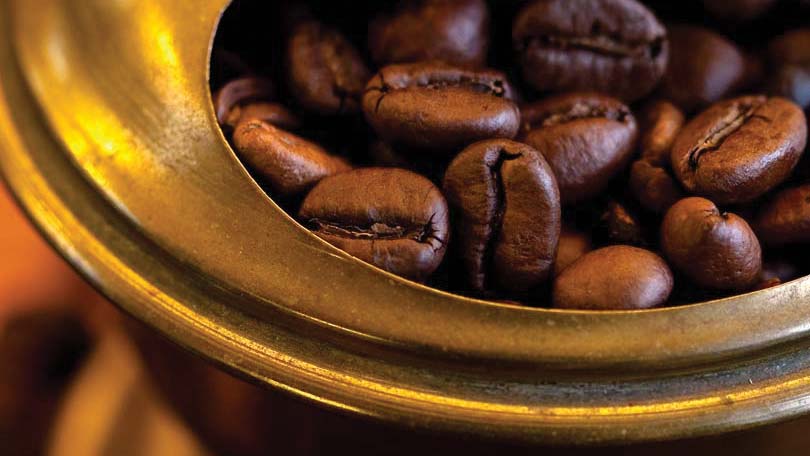As more consumers become concerned with the environmental impacts of fertilizers and pesticides used in farming, many are choosing to buy organic fruit and vegetables, and even organic coffee. In fact, Organic Trade Association data shows that organic coffee sales in the US shot up forty percent from 2004-2005. As the market continues to grow and more companies offer organic product, it is important to understand what the organic certification means, whether it is truthful, and whether it is worth the extra money that these products usually sell for.
Basically, organic coffee is a product grown in a way that offers very little environmental impact. The goal of organic coffee farming is to produce beans while maintaining soil fertility and building biologically diverse agriculture without the use of toxic fertilizers and pesticides. Many organic farmers fertilize with compost, and use disease resistant mulch. For crop rotation, organic farmers will plant fruit and nut trees to replenish the soil with nutrients and maintain good quality soil. Third-party agencies accredited by the US Department of Agriculture verify organic production, and will give the title ‘certified organic’ to coffee beans that are grown to meet the USDA standards.
To obtain a title of ‘certified organic’ in the United States, a coffee grower must prove that certain growing conditions have been met. First, the farmer must have a crop rotation plan to control for pests, prevent soil erosion, and to prevent loss of soil nutrients, which would occur if the same crop was planted in the same field each year. Also, the coffee beans must have been grown on land that has not had toxic pesticide or fertilizer use at any time within the last three years. Finally, there must be a large enough space between the organic coffee and the nearest conventional crop to provide a buffer against contamination.
An added benefit of organic coffee beans is that they are typically produced by shade-grown coffee trees. These shade grown trees, which have been replaced on conventional farms by a variety of coffee tree that can grow in full sun, provide a habitat for migratory birds and wildlife. The large trees that provide shade help reduce topsoil loss, and the birds that migrate through are a natural defense against bugs and pests. The shade trees, which were standard before the industry become commercialized, mature less quickly than the full sun variety, and are thought to produce a better tasting coffee bean.
Organic coffee is grown in many countries, with the leading producers of Mexico, Costa Rica, Peru, Guatemala, and Nicaragua. Brazil, Colombia, the Dominican Republic, Venezuela, and the Philippines are also home to organic coffee farms. Even the United States grows organic coffee in Hawaii. Though organic farming is more labor-intensive, certified organic farmers are paid about fifteen cents more per pound for organic coffee than conventional, which is a large increase considering that some farmers only receive ten cent per pound total. Organic certification costs nearly three hundred and fifty dollars, which sounds affordable, but is quite costly when you consider that some of these farmers make only one thousand dollars total profit in a year.
Organic decaffeinated coffee beans offer an interesting challenge, because although they may be grown to meet organic requirements, conventional decaffeination uses methylene chloride to remove the caffeine from the coffee beans. This chemical is prohibited in organic production, so to maintain organic status the caffeine must be removed with water, known as the ‘Swiss Water’ process.
While a stamp of ‘certified organic’ can provide consumers with a label to look for when searching out organic coffee beans, there are still dishonest people out there looking to capitalize on organic demand. For example, organic coffee is usually shade-grown, but some beans that are shade-grown are not organic; the label of shade-grown can mislead people into thinking that a product is organic while actually the shade grown coffee has been grown using toxic chemicals. Also, tastes can vary between conventional and organic coffee beans, so you must be patient in finding the right organic blend. Buy small quantities of beans at first to figure out which you like best, or ask to sample brewed organic beans before you purchase them from a coffee store. Before buying organic, do the research on accredited certification agencies and individual coffee growers to ensure that your extra money is actually benefiting true organic coffee farmers.
With some products, organically farmed items can cost consumers twice as much as the conventionally farmed variety, but such is not the case with organic coffee. A one-pound bag of regular Italian Roast coffee from Starbucks will set you back $10.45, while the same size bag of organic coffee beans from Mexico costs $13.45. To many, the extra three dollars per bag is worth knowing that the beans were grown in an eco-friendly way.






